Doing business
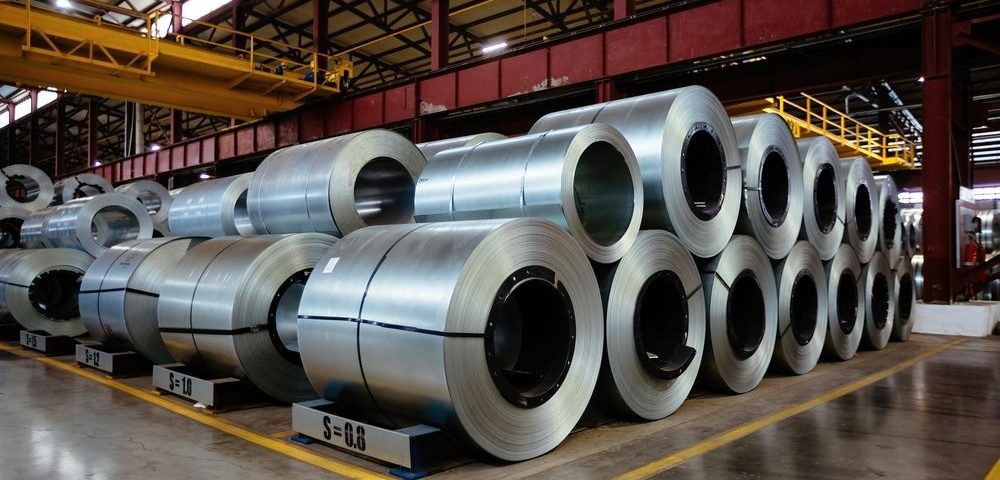
Ukraine and Poland have always had extensive trade ties, including in iron and steel products. Before the war, Ukraine had a large share in the Polish market of steel products. Unfortunately, in 2022, Ukrainian steel exports accounted for only 12% of the total consumption of steel products in Poland. In Poland, the level of steel consumption has always been higher than in Ukraine by about 2.5 times and, therefore, the Polish market has always been very important and attractive for Ukrainian producers and exporters.
Today, Ukraine is almost equal to Poland in terms of steel production, although before the war Ukraine produced 3 times more steel. According to WorldSteel, last year Polish companies reduced steelmaking by 13.1% y/y – to 6.4 million tons, while the decline in 2022 was 8.6% y/y – to 7.7 million tons. At this level of own production, domestic steel consumption in Poland in 2022 amounted to 13.3 million tons, down 13.5% y/y. That is, in order to cover its domestic needs, Poland needs to import at least 5 million tons of steel products per year.
«Poland is one of the top 5 largest importers of almost all types of long and flat products to the EU (wire rod, rebar, structural shapes, hot-rolled and cold-rolled sheets). The largest imports are of flat products: in 2022, Poland imported 6.3 million tons of these products, of which almost 1.3 million tons came from non-EU countries,» says GMK Center analyst Andriy Glushchenko.
Capacious market and physically accessible logistics allowed Ukraine to increase the supply of steel products to the Polish market even in the conditions of war and sharp reduction of own production capacities. According to the State Customs Service of Ukraine, in 2023, Ukrainian steel exports to this country increased by 16% y/y in physical terms (up to 1.8 million tons), although in monetary terms it decreased by 18% y/y (to $1.1 billion).
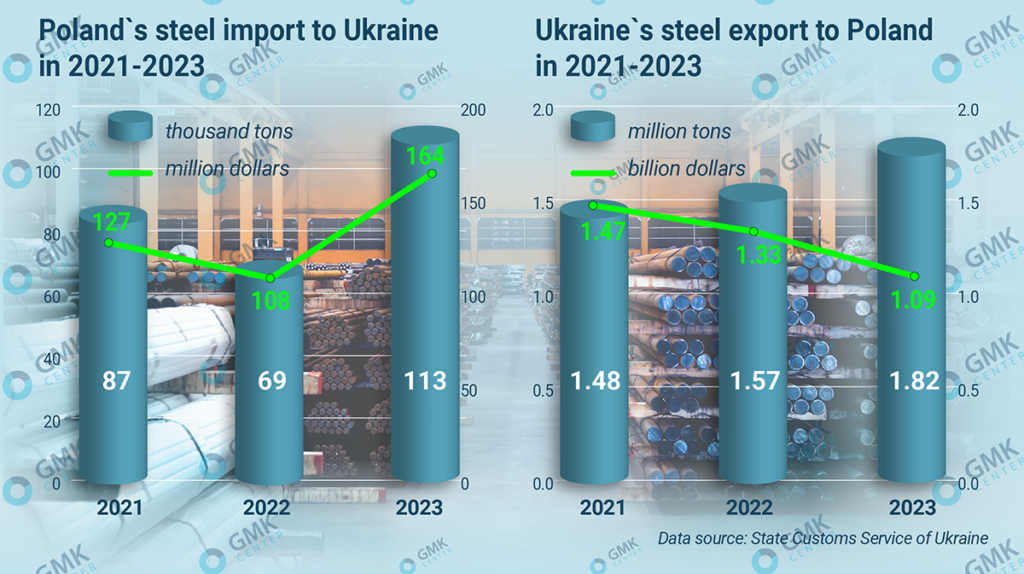
Unfortunately, compared to the pre-war period, exports of Ukrainian products to Poland have fallen – we export mainly raw materials and semi-finished products. Poland, on the other hand, managed to increase the supply of steel products to the Ukrainian market. In 2023, Polish companies increased steel exports to Ukraine by 62.7% y/y (to 112.7 thousand tons), in monetary terms – by 51.6% y/y (to $164 million), in 2023, 9.1% of Ukrainian steel imports came from Poland, but the growth potential of Polish exports is quite high.
Ukraine exports to Poland a full range of iron and steel products. The most popular export item is iron ore, supplies of which, although reduced since 2021, but in 2023 amounted to 3.3 million tons worth $346 million.
In terms of key positions of Ukrainian exports of steel products, Ukraine managed to increase supplies to the Polish market in the period 2021-2023:
In some segments, Ukrainian suppliers were able to partially replace products that were previously supplied from Russia (before the imposition of sanctions and the outbreak of hostilities).
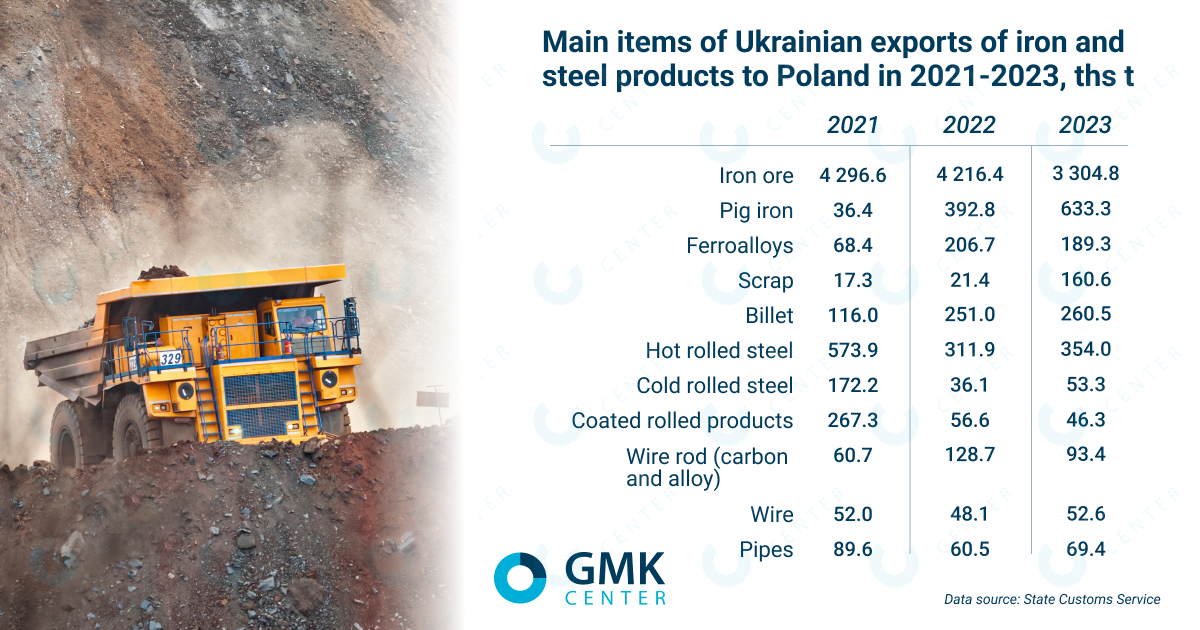
After the start of the war, Ukraine sharply increased exports of scrap to Poland – from 17.3 thousand tons in 2021 to 160.6 thousand tons last year. The specialized association UAVtormet believes that Ukraine will be able to export about 500 thousand tons of this material to Poland from this year. This prospect of scrap outflow may create imbalance and deficit in the domestic Ukrainian market, which requires more and more scrap to restore production.
The increase in Ukrainian exports of steel semi-finished products to Poland is due to internal cooperation between ArcelorMittal’s facilities in different countries. The Polish division of the company imports square billets produced by Ukrainian ArcelorMittal Kryvyi Rih.
The key positions of Polish exports of steel products to Ukraine in 2023 are:
«Imports of Polish steel products to Ukraine include the entire range of construction products – beams, angles, channels, rounds, profiles, welded pipes. To a much lesser extent, steel sheet from Poland is represented on the Ukrainian market, as Turkish imports prevail. But among Polish imports there may be steel products from other European countries, which local traders send to Ukraine from warehouses in Poland. For example, this happens with steel products from Italy and Germany», says Vitaliy Prytula, head of the company Evrometal.
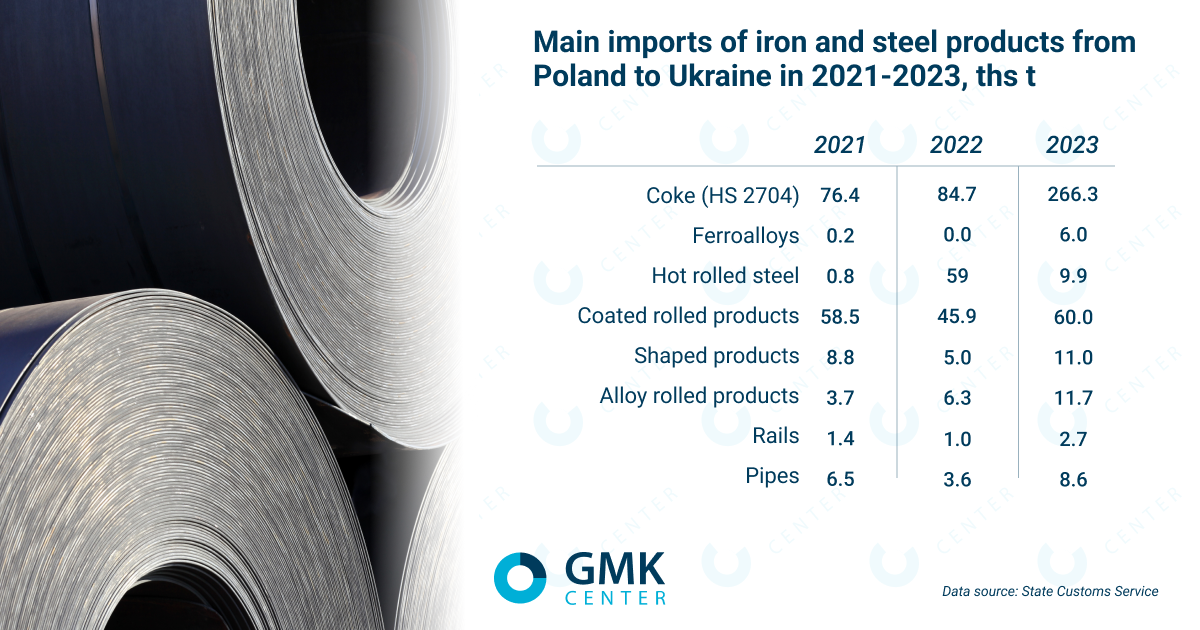
Between pre-war 2021 and 2023, Poland has significantly increased the supply of such types of steel products to the Ukrainian market:
The volume of supplies of Polish steel products to Ukraine is still small. The most significant positions in the Ukrainian market are held by Polish polymer-coated rolled products. In 2022, ArcelorMittal Poland supplies amounted to 43.7% (25.2 thousand tons) of imports of this product from EU to Ukraine.
Supplies of coke (code 2704) from Poland, which have grown significantly in the end of last year the company idled the coke battery at that facility. In pre-war 2021 Polish supplies of this product amounted to 76.4 thousand tons worth $30 million, but by 2023 they had grown to 266.3 thousand tons worth $115 million.
Poland competes on the Ukrainian market with other importers – both from Europe and Asian countries. The key problem for Poland in increasing exports to Ukraine is limited domestic production capacity, which is already shrinking. During the pandemic, ArcelorMittal Poland shut down its blast furnace and steelmaking operations in Krakow, and since the end of last year has idled the coke battery at that facility. In total, this largest Polish producer reduced steelmaking by 15% in 2022 compared to 2021 – to 3.4 million tons, falling even below the level of the pandemic year 2020 (3.9 million tons).
There is a relative balance in the mutual Ukrainian-Polish trade – supplies in monetary terms are larger for one or the other country. But there is a specific feature — in natural terms, Poland exports much less to Ukraine, as its goods have a higher added value. Thus, in 2023, Polish imports increased by 20% – to 4.6 million tons, in monetary terms – by 19%, to $6.6 billion. In turn, Ukrainian exports last year decreased by 17% – to 11.6 million tons, in monetary terms – by 29%, to $4.8 billion.
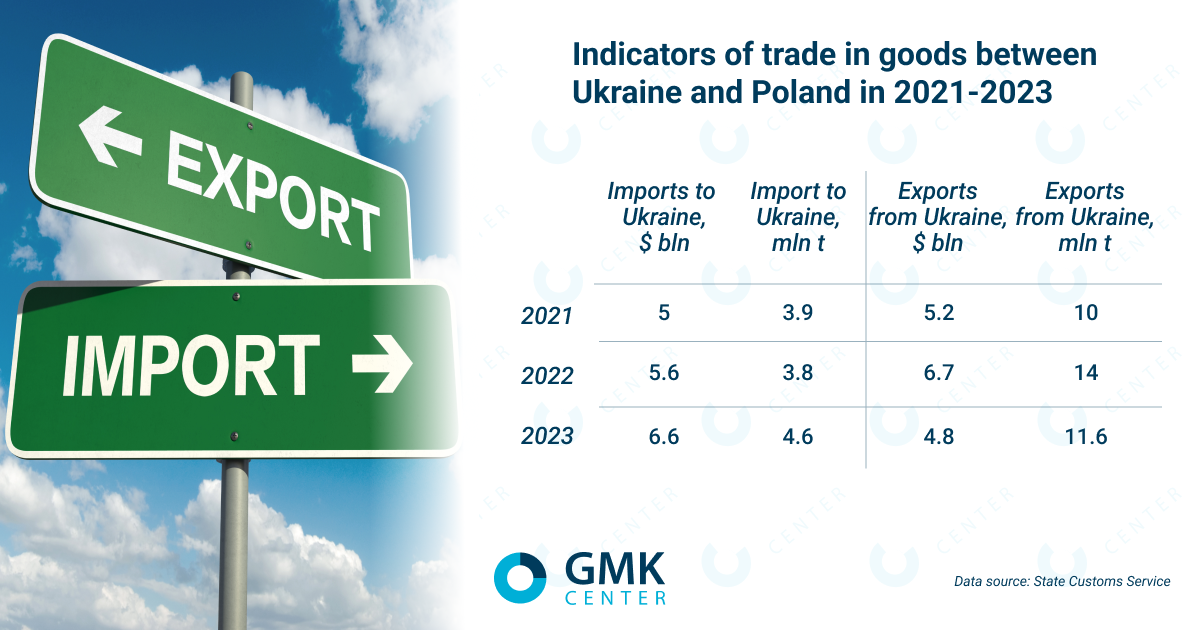
The decline in Ukrainian exports to Poland is due to the ban on imports of our agricultural products (in effect since May 2023) and partly due to the blockade of border crossings by Polish carriers and farmers, which lasted from November 6, 2023, to January 16 this year. According to some estimates, the Ukrainian economy lost more than €1.5 billion euros in November-December last year due to the blockade of crossing points on the western borders.
Even the new Polish government, which is formally more favorable to Ukraine than the previous one, will not lift the ban on agro-imports. Moreover, Poland opposes the EU’s extension of the preferential trade regime for Ukraine for another year (the current agreement is valid until June 2024). However, we hope that Poland will not be able to prevent the EU from making a collective decision with its vote.
In addition to trade and political problems, there are a large number of logistical constraints that reduce and complicate the volume of mutual trade between our countries. Ukraine’s integration into the EU already requires large mutual investments in logistics infrastructure on both sides. A separate challenge is the harmonization of customs, permits and other procedures. Practically 2 years of war have shown us that if there is good will and desire to increase the capacity of logistics routes, it is possible to achieve this goal despite the different tracks and procedures.
The likely prolonged abolition of import duties and tariff quotas on exports from Ukraine, the growth of the Polish economy (4.9% in 2022) and logistical accessibility create good conditions for increasing the presence of Ukrainian steel products on the Polish market. Poland has banned imports of Ukrainian agricultural products, but there is no such negative attitude towards our steel products. Today, Poland for Ukraine is not only a transit country for our exports and imports, but also a very capacious market for sales of iron and steel products. On the other hand, the Ukrainian recovery programs are of interest to Polish large and medium-sized producers and traders of steel products.